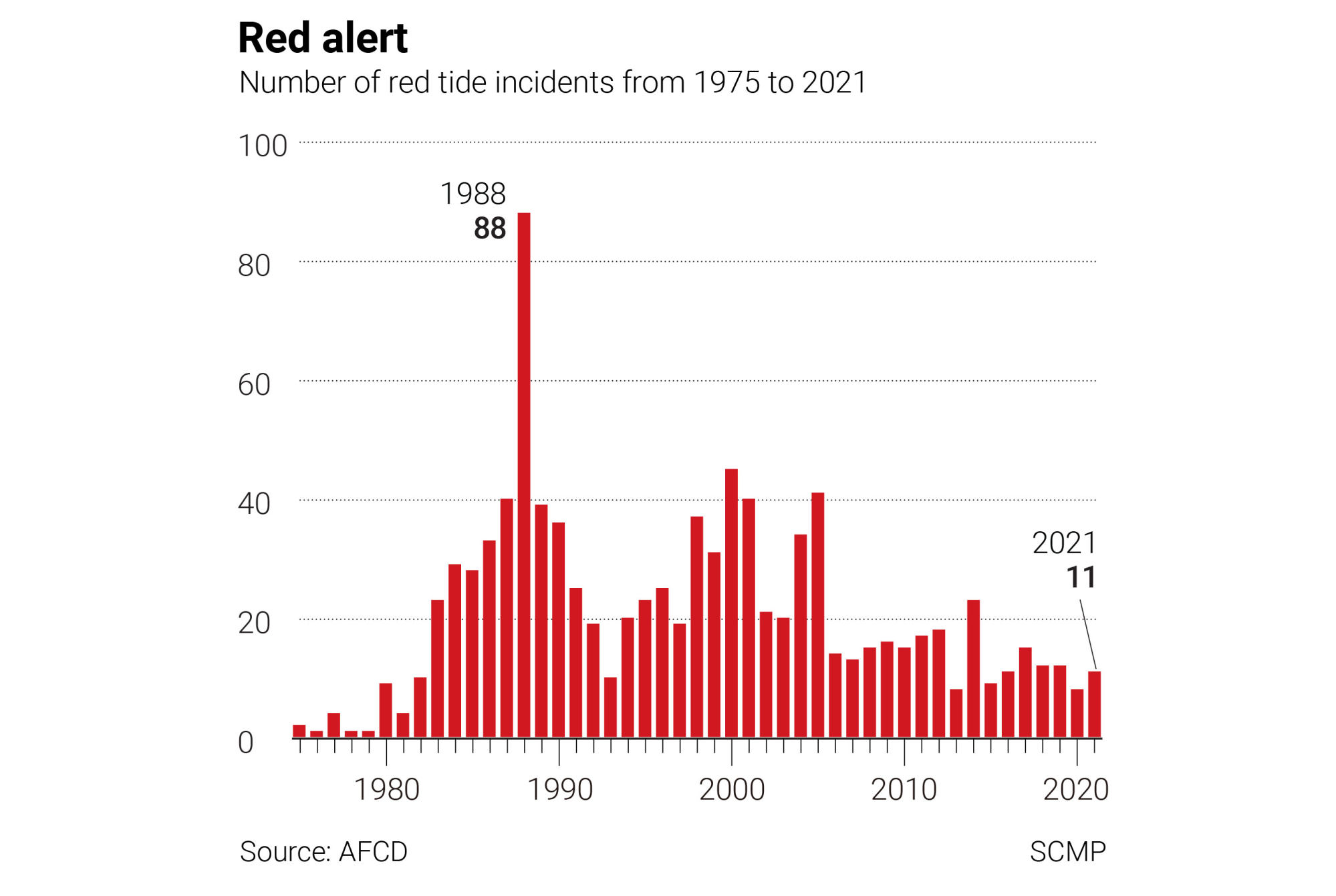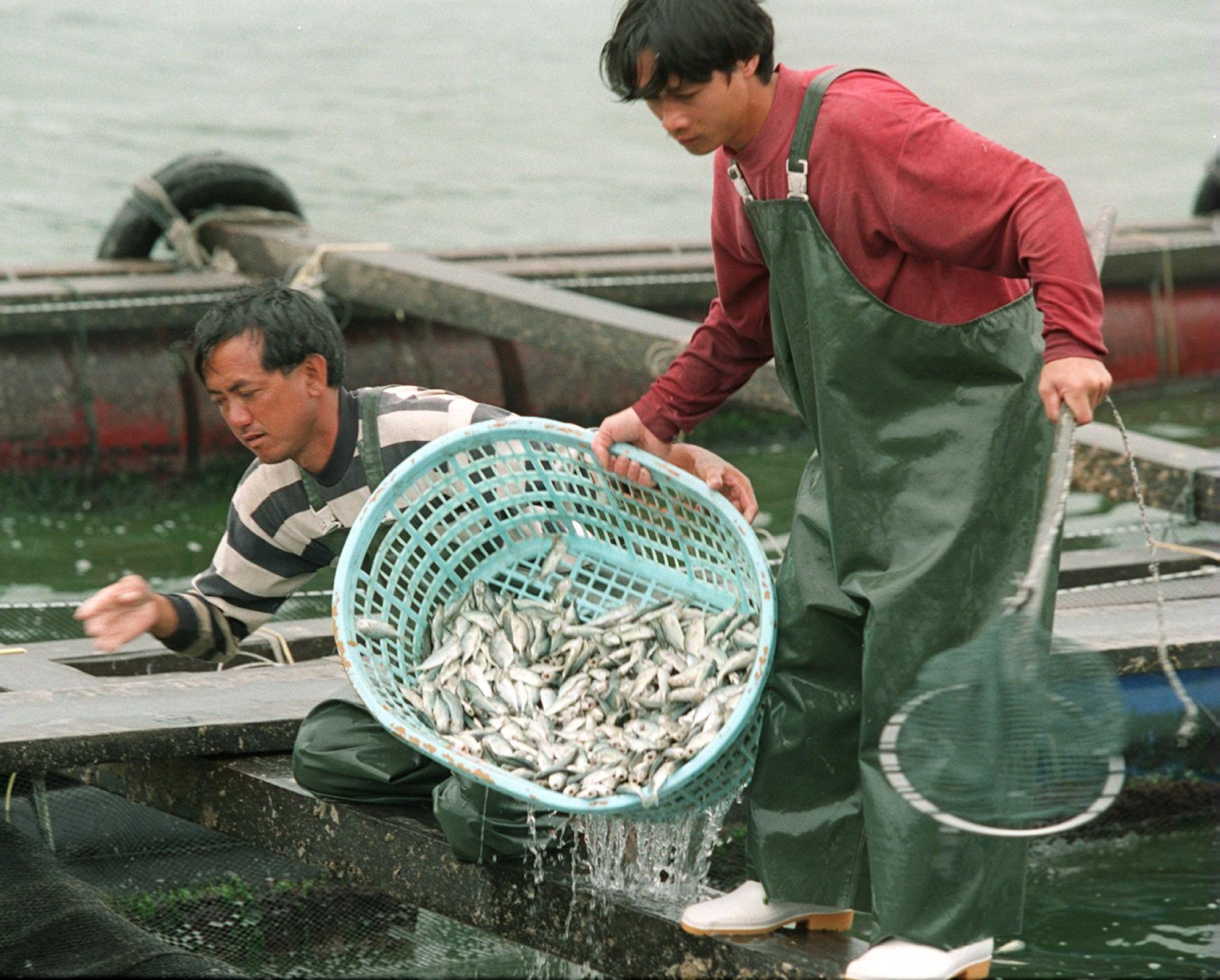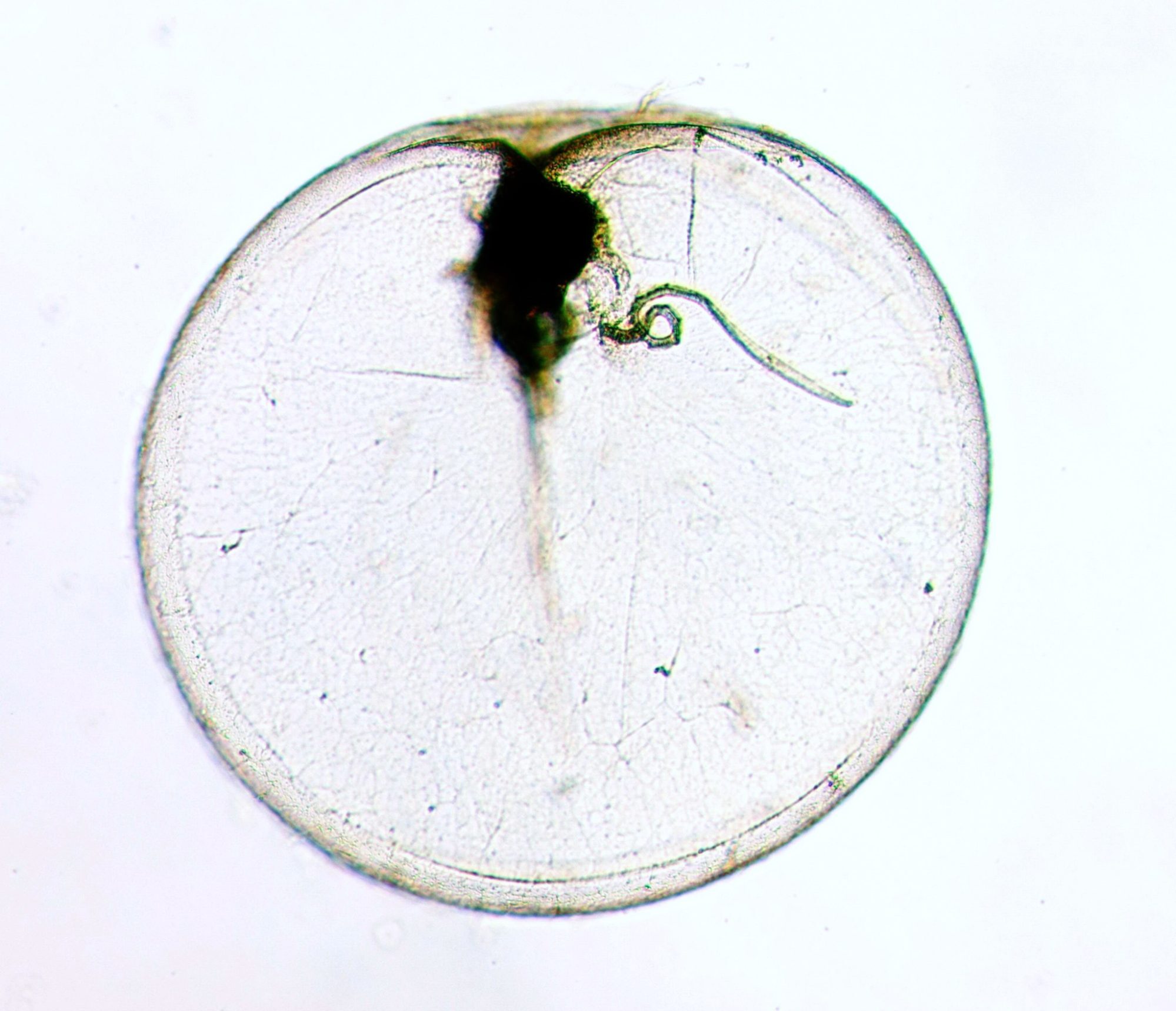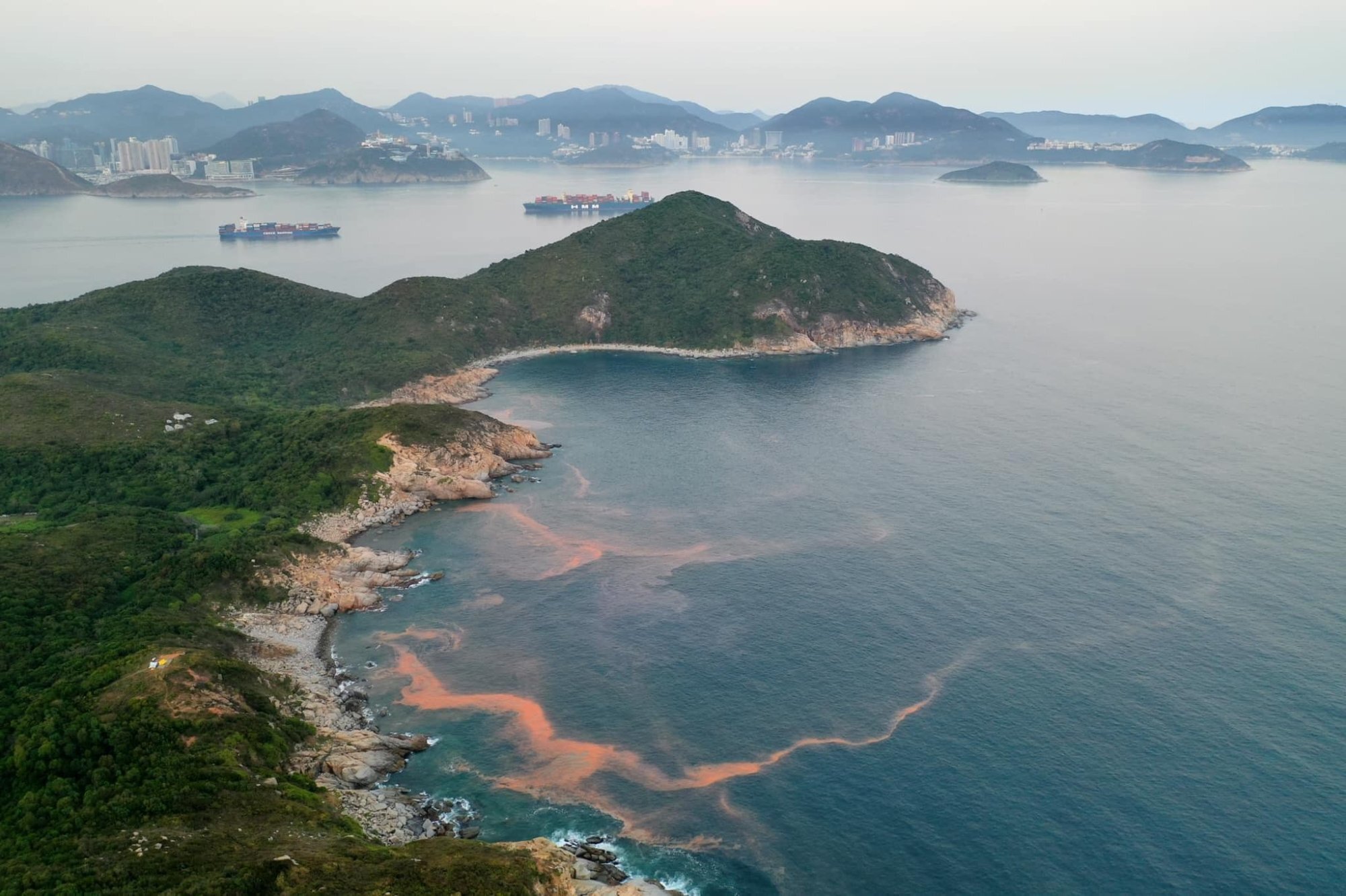
Explainer | How red tides occur, why they smell bad, why you should not swim in one and why your dog should stay out of the water
- Red tides are blooms formed by millions of algae when sea conditions are right, usually in spring. They often turn a reddish colour, and at night glow blue
- Usually they are harmless, but some can make people very ill if they come into contact. Dogs that enter a red tide or eat poisoned fish can be affected too
Red tides returned to Hong Kong shores this week.
A natural phenomenon caused by large concentrations of microscopic algal blooms, the latest ones involved Noctiluca scintillans, a non-toxic species of plankton common in Hong Kong waters, says the city government’s interdepartmental red tide working group.
Red tides were spotted on the south side of Hong Kong Island, in Victoria Harbour and on outlying Lamma Island. “Given the wide extent of these current red tides, the situation may last for several days,” said a group spokesman.
Internet users took to social media to share sightings of the rust-coloured patches which, at night, through a chemical reaction called bioluminescence, create a blue fluorescent glow known as “blue tears”.
Last weekend, the coasts of Sai Kung in the New Territories were flooded with blue tears, a beautiful spectacle but one that can harm marine life.
The Leisure and Cultural Services Department put up health warnings on the affected beaches advising members of the public not to enter the water, warnings that became redundant with the closure on March 17 of public beaches – the latest measure to fight the spread of the coronavirus.
Red tides occur often in Hong Kong, on average about 14 times a year and mostly in springtime, says the Agriculture, Fisheries and Conservation Department.

Algal blooms that cause harm are not common. In 1998, however, red tides caused by a harmful algae, Karenia digitata, almost wiped out Hong Kong’s fish farms, causing losses of HK$250 million.
More about red tides
Red tides occur when conditions are right for certain marine algae to grow rapidly, says marine ecologist David Baker, an associate professor of the school of biological sciences at the University of Hong Kong.

“Similar to a houseplant, marine algae need the right light, temperature and nutrients to achieve explosive growth. When other species, such as zooplankton and filter-feeding fishes, are rare or absent in the ecosystem, algae can bloom to excessive levels.
“We call them red tides because some species in very high abundance have pigments that give them a reddish colour. But this is not always the case, so it’s more appropriate to call them harmful algal blooms, or HABs,” he says.
An HAB is usually a sign that an ecosystem is out of balance. “Most often pollution, ocean warming and overfishing are implicated,” Baker says.
Stem the red tide: researchers say human pollution is behind algal blooms
Why do red tides smell so bad?
When we observe an HAB it’s already starting to die off, says Baker.
“Large blooms can generate a huge amount of organic matter, and after the cells die they decompose,” he says. “Marine bacteria are primarily responsible for this.”

Are red tides harmful to human health?
It depends, says Baker. “There are very few marine algae that are toxic and harmful to humans, primarily because we are not in the habit of ingesting large volumes of seawater and only have skin contact with HABs.”
But not all blooms are created equal. Some species, he says, can cause severe illness or even death, with symptoms varying from skin rashes to paralysis and laboured breathing. “For this reason, swimming in an HAB is not advisable,” Baker says.

In 2013, two people died in Sabah, Malaysian Borneo, after eating shellfish contaminated with a red tide toxin.
Hong Kong's algal blooms – red alerts from nature
Can they harm wildlife?
Whether or not algae themselves are toxic, when they form blooms these can be harmful, says Baker.
“Toxic species can cause mass die-offs of fish and invertebrates, as evidenced by occasional losses within our local mariculture industry and the rapid death of coral in marine parks.”
Biotoxins from HABs are transferred throughout the food web, says Dr Tabris Chung, scientific officer at the City University of Hong Kong’s Aquatic Animal Virtopsy Lab.

“When algae are consumed by filter-feeders like shellfish, the toxins rapidly accumulate to a high level. The mucus secreted by toxic algae can also clog the gills of fish and suffocate them.”
Other species, such as seabirds, sea turtles, dolphins, porpoises and whales then eat the toxic shellfish and fish, Chung says.
“In other words, toxins produced by single-celled organisms are eaten by larger organisms, from small invertebrates to apex predators, compounding the toxic effect at each level.”

Can red tides harm my dog?
When there’s a red-tide health warning people should not let their dogs in the water, says Dr Fiona Woodhouse, deputy director of welfare at the Society for the Prevention of Cruelty to Animals (HK).
“And pay attention to dogs on the beach in case they consume sea creatures affected by the red tide that might have washed up,” says Woodhouse.
Dr Jane Gray, the society’s chief veterinary surgeon, says the potential effects on dogs depend on the type of algae that caused a red tide.
“While most species of algae are not harmful, on rare occasions it could affect the central nervous system,” she says.
If a dog has been on a beach with red tide, Gray recommends washing it down with fresh water/gentle shampoo, preferably wearing gloves, and to watch for any unusual symptoms.
If you spot a red tide, email [email protected], or call 2150 7124 during office hours.

